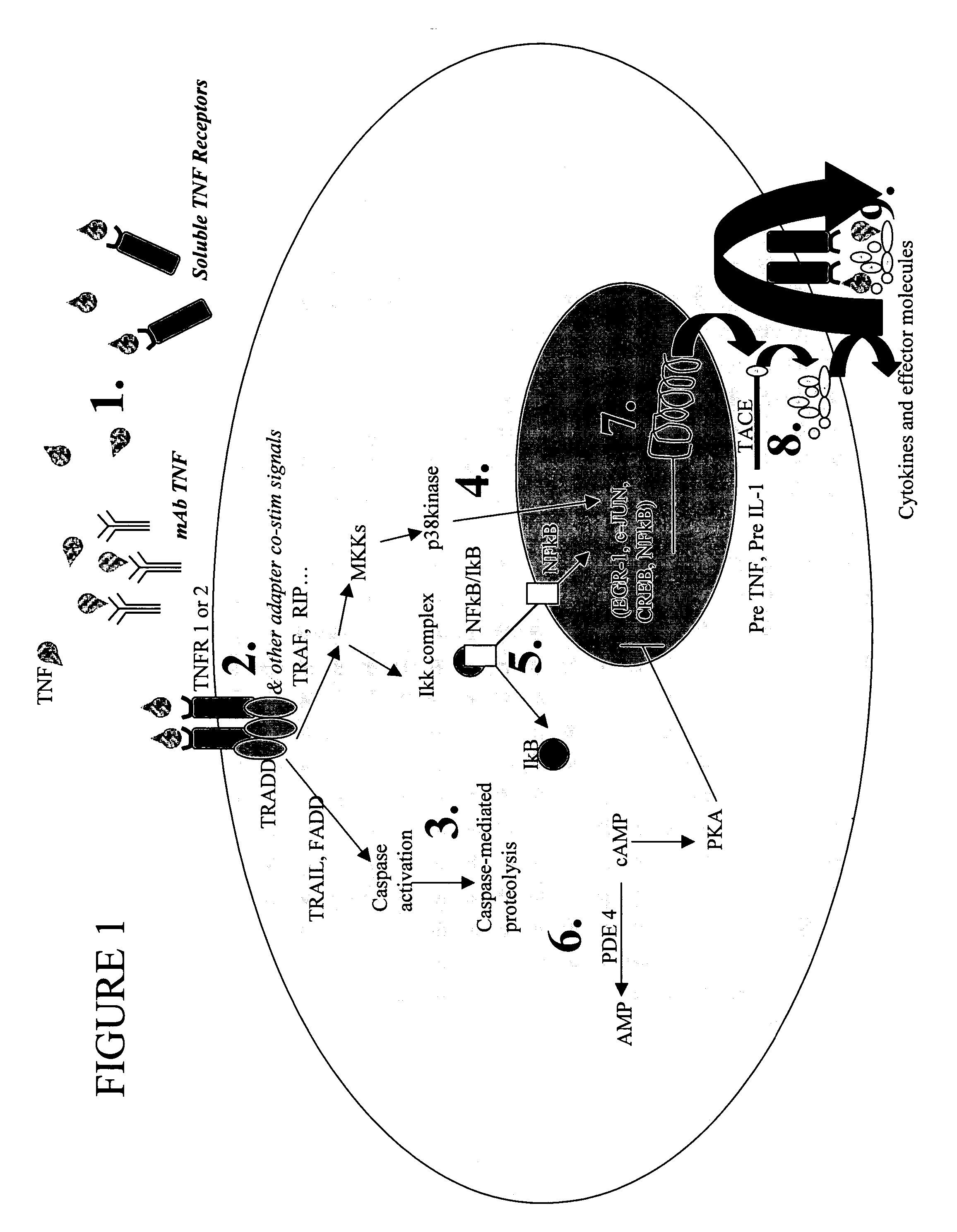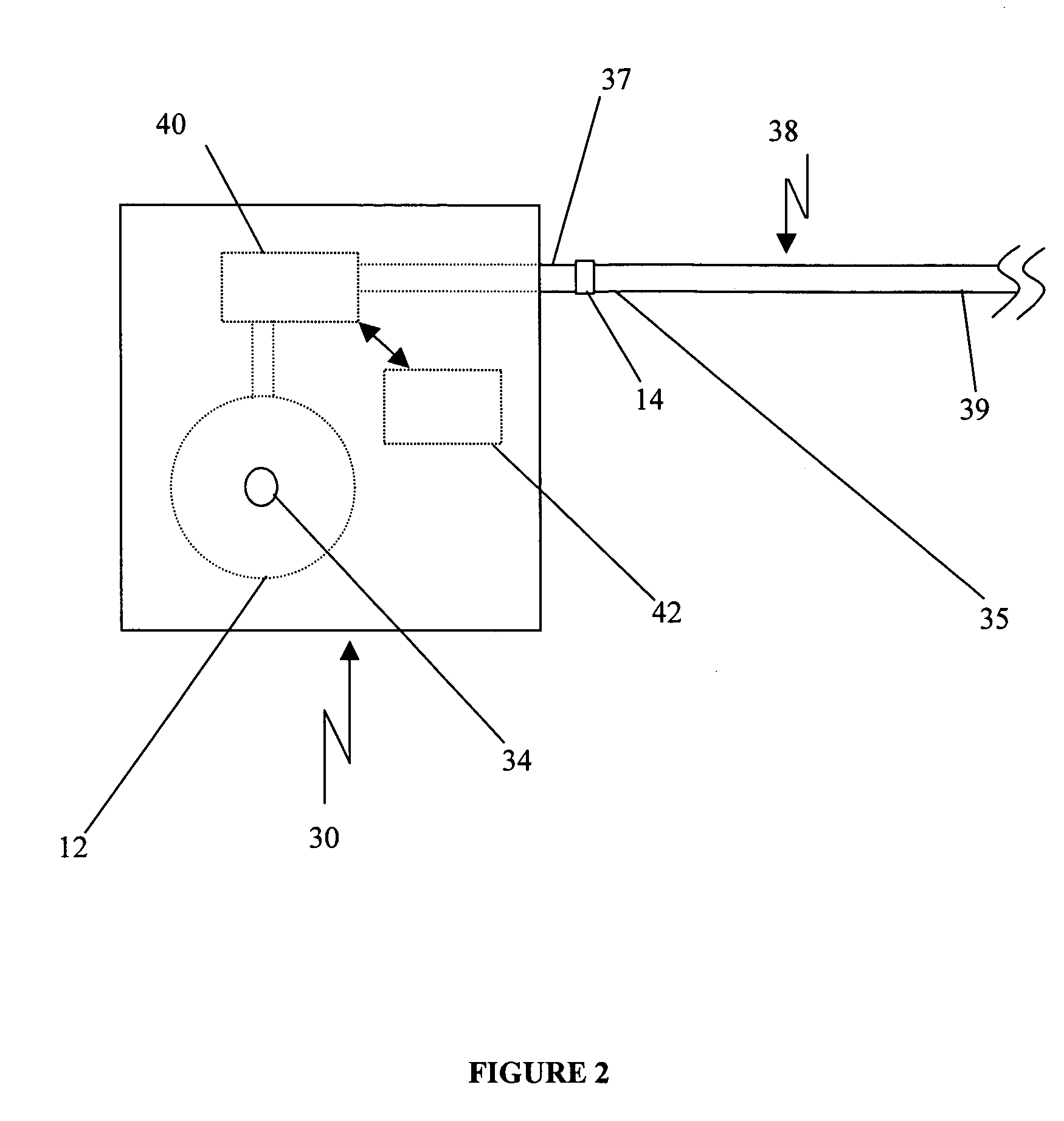Extracellular TNF inhibitors for treating CNS disorders
a tnf inhibitor and extracellular technology, applied in the field of medical devices and methods for attenuating proinflammatory mediators, can solve the problems of toxic substances released by neurons or glial cells, inability to penetrate the blood-brain barrier, and the risk of serious side effects of tnf blocking agents, so as to reduce side effects, improve efficacy, and reduce side effects
- Summary
- Abstract
- Description
- Claims
- Application Information
AI Technical Summary
Benefits of technology
Problems solved by technology
Method used
Image
Examples
Embodiment Construction
[0020] In the following descriptions, reference is made to the accompanying drawings that form a part hereof, and in which are shown by way of illustration several specific embodiments of the invention. It is to be understood that other embodiments of the present invention are contemplated and may be made without departing from the scope or spirit of the present invention. The following detailed description, therefore, is not to be taken in a limiting sense.
[0021] All scientific and technical terms used in this application have meanings commonly used in the art unless otherwise specified. The definitions provided herein are to facilitate understanding of certain terms used frequently herein and are not meant to limit the scope of the present disclosure.
[0022] In the context of the present invention, the terms “treat”, “therapy”, and the like mean alleviating, slowing the progression, preventing, attenuating, or curing the treated disease.
[0023] As used herein, “disease”, “disorde...
PUM
| Property | Measurement | Unit |
|---|---|---|
| CNS disorder | aaaaa | aaaaa |
| soluble | aaaaa | aaaaa |
| adhesion | aaaaa | aaaaa |
Abstract
Description
Claims
Application Information
 Login to View More
Login to View More - R&D
- Intellectual Property
- Life Sciences
- Materials
- Tech Scout
- Unparalleled Data Quality
- Higher Quality Content
- 60% Fewer Hallucinations
Browse by: Latest US Patents, China's latest patents, Technical Efficacy Thesaurus, Application Domain, Technology Topic, Popular Technical Reports.
© 2025 PatSnap. All rights reserved.Legal|Privacy policy|Modern Slavery Act Transparency Statement|Sitemap|About US| Contact US: help@patsnap.com



